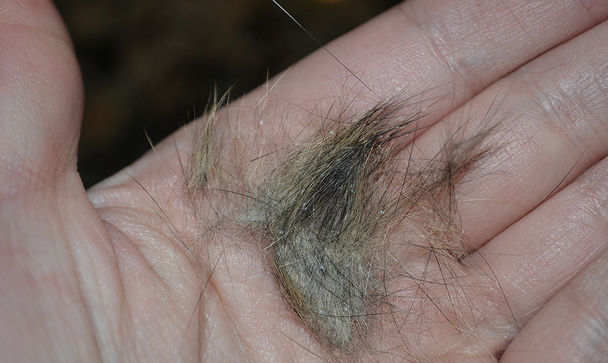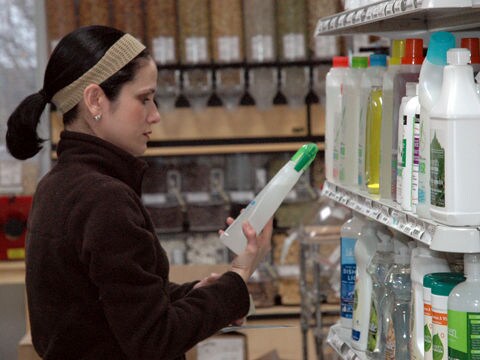Anyone with a pet at home has pet dander. In fact, even humans produce dander, which is just dead skin cells. “Pets often get blamed for dander, but people also shed dander, both of which accumulate to high levels in a home contributing to allergies,” says Caroline Blazovsky, the president of My Healthy Home. “Pet dander often gets blamed for the allergies, but it’s really the proteins produced by the animal in their saliva and urine that is the real culprit.”

How Do You Test for It?
Ernie Penachio, the executive director of manufacturing operations and facilities at Acorda Therapeutics, is an expert in airborne particulates — tiny things such as dust and dander floating in the air. He says you can monitor for airborne particulates, such as pet dander, via air samplers.
There are two types of air samplers that can be used to monitor the quality of air. One measures air particulates — bits of stuff. It is typically placed in the location that needs to be monitored and draws air through the device. The other measures mold spores and bacteria. It functions like the air sampler but then uses a petri dish instead. Air is drawn through the apparatus and contacts the petri dish. The dish is then placed in an incubator for growth promotion of biological contaminants — germs and mold, basically.
Unfortunately, pet dander is a natural consequence of having animals in the home, though you can reduce the amount with regular trips to the groomer. There are do-it-yourself tests available to help measure for such allergens. Two air quality monitors to check out are:
- Examinair Allergen and Mold Home Test Kit
This involves a professional air pump and cassettes that are shipped to you to take air samples in your home. The EXAMINAIR kit will help you determine your levels of dander and if you have the potential for dust mites as well as other allergens.
- Sylvane Indoor Air Quality Allergen Screening Kit
The Sylvane kit uses a Bio-Scan sampling tape to collect a sample from a surface in your home. You will receive a detailed report once your sample is tested indicating the levels of dander, dust mites and other allergens.

How Can You Clear Your House of It?
Penachio says, “Consistent and thorough cleaning is essential to controlling airborne particulates. Basically, the more you clean the surfaces of the environment, the less airborne particulates you will have.” Blazovsky agrees that heavy and regular cleaning is a must and suggests eliminating wall-to-wall carpeting in place of easier-to-clean surfaces such as wood and tile.
Both suggest the following:
- Sweep and Vacuum
On a weekly to biweekly basis, wash everything, including floors, walls, windows and ceilings as well as soft surfaces such as couches and chairs.
- Find the Most Popular Areas
Areas of heavy usage should be cleaned on a more regular basis than dormant areas.
- Switch It Up
For enhanced bacterial control of airborne particulates like dander, rotate the products you use to clean on a weekly basis from bleach to isopropyl alcohol to a mold inhibitor then back again.
- Get the Right Equipment
Use high quality high-efficiency particulate arrestance (HEPA) filters on your vacuum, furnace, heating, ventilation or air conditioning units or standalone air purifiers. Appropriate cleaning and HEPA filtration are very important if you’re going to have an animal in your home, and it’s necessary to do due diligence if you want to keep a healthy home.
- Wash Your Pets
Regularly bathe your pets, their toys, and bedding.

Blazovsky goes on to say that testing the air in your home is imperative to wellness. “Physicians are now starting to understand the relationship between the health of your home and your overall wellness.” Contaminants in the home can directly impact your immune system and cause stress on your body, potentially contributing to health complaints. Do yourself (and you furry friends!) a favor and get your house tested.
And check out Cat Dander: How to Relieve Your Allergies.
Laura Richards is a Boston-based freelance writer and the mother of four boys including a set of identical twins and is also mom to three rescue pets: Scarlett, a 7-year-old beagle, and Edith and Ollie, 15-year-old identical twin black cats. She has written for numerous parenting publications and is the president of On Point Communications.



